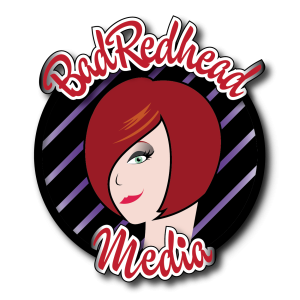How To Sell Without Being Sleazy by @K8Tilton
You’re browsing Twitter, looking to connect with readers and authors who share your love of reading. You find an author who writes YA fantasy, your favorite kind of books, so you click that follow button and look forward to some great tweets about fantasy worlds, weapons, and creatures.
Instead, you get an automatic direct message (DM) that says:
“CHECK OUT MY BOOK AND LEAVE A REVIEW: LINK AND LIKE ME ON FACEBOOK via @spaminstantmessages”
The screaming caps, “ME ME ME” attitude, and automation of the message is horrible.
You quickly unfollow the author for fear of more horrible messages.
And another sleazy marketing technique backfires.
So, how do you avoid similar mistakes while marketing your books or services?
Let’s break it down.
As an author assistant, I have personally found Twitter to be an amazing place to connect with potential clients. Twitter is where I got my first assistant job and has provided numerous others, but if you hop onto my stream you’ll notice I don’t often mention anything at all about my author assistant work. So, how is it that the author who is constantly sharing his book gets fewer results than someone like me who rarely mentions my services on social media?
Easy. Social media is social, not an ad platform.
I follow a “Media, Not Marketing” strategy, as Rainmaker Digital coined it. This is by far the best way I have seen for authors and publishing professionals to successfully grow their businesses.
The idea goes like this: by focusing on making content of value to your target audience, you build trust with those most likely to enjoy your book or product. [share ]By building trust, you build an audience[/share], and that audience will continue to grow while supporting you in turn.
Instead of the interruption marketing of the past, aka annoying ads that interrupt the content we are trying to enjoy, [share ]focusing on marketing with content yields better results for you[/share] and a better experience for your customer.
One of my favorite examples of this strategy comes from Brian Clark’s New Rainmaker podcast.
The story goes like this: in the late 1990s, Marvel was on the verge of complete failure. Then came the X-Men movie and Spiderman movie. But unlike what you may think, Marvel made very little money on the films themselves; instead, they raked in the cash with merchandise: t-shirts, toys, games…you get the picture. By partnering with a studio, Marvel was able to effectively create a two-hour “ad” people wanted to watch, an “ad” that made said people more likely to pick up numerous Marvel products.
So how do we use this in the publishing industry?
We focus on creating content people actually care about.
As an author, that may mean you focus on topics your ideal reader likes. So your book has music in it? Maybe you should look at creating some original songs to share on Youtube. Do you offer editing services for authors? Maybe you should create a free content library on your site with the best self-editing tips.
By sharing our knowledge free to those we wish to become our customers, we create a bond of trust that serves us better than any traditional ad could.
Another great example of how this “media not marketing” approach works. In 2014, Brian Clark and Robert Bruce started the New Rainmaker podcast. The first ten episodes were a detailed mini course in this “media not marketing” approach they use at Rainmaker Digital (formerly Copyblogger Media). I had heard of Copyblogger before but wasn’t a dedicated reader or customer. But, after listening to this podcast filled with information most people would charge hundreds for, I was hooked, a total believer.
When the launch of the Rainmaker Platform came, I signed up for the beta version and haven’t looked back since. And not only have I not looked back, I have also brought others into the Rainmaker community (as fans and as paying customers).
Before you think you need to push the hard sell to gain traction with sales, consider how instead of risking the trust of your potential audience with sleazy promotional pushes, you could be making believers and supporters of your business who will build your community and income for you.
Big thanks to Robert Medak for his comment that spurred this post. Do you have a question of your own? Leave it in the comments below, and Rachel or I may tackle it in a future blog post.
Photos courtesy of pixabay.
[blurbit]



Thank you for the mention, Kate. I”m happy it helped!
Hi Brian! Big fangirl here.
Thanks for visiting my little blog and responding to Kate’s post. She’s terrific and her advice for authors is always sound.
Thanks again! ^_^
Rachel
Thank YOU for the incredible information you provide for us unemployable types. You have been a huge inspiration to me as I take this company further. I can’t thank you enough.
Hi Kate, I’ve been following you for about six months. You’ve moved to the top of my bookmarks!
Oh wow! Thank you so much, Garry, I’m honored. I hope you continue to enjoy my articles here and on katetilton.com! 🙂